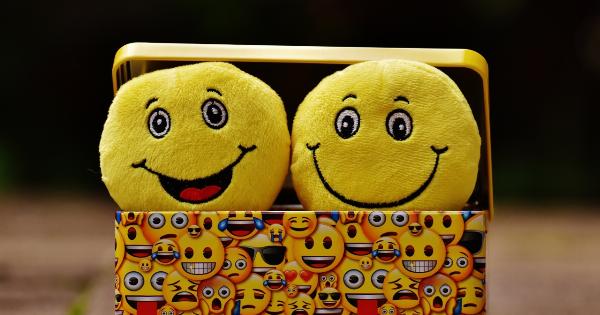Smiling is a universal expression of human emotion that has the power to brighten up our day, melt away stress, and create a positive atmosphere.
But have you ever wondered if all smiles are genuine? Is there a difference between a genuine smile and a fake smile? And most importantly, what impact do these smiles have on our mood and overall well-being? This article aims to explore the intricate connection between a fake smile and our mood, delving into the science behind the phenomenon.
The Difference between a Fake Smile and a Genuine Smile
Before we dive deeper into the topic, it is crucial to understand the fundamental distinction between a fake smile and a genuine smile.
A genuine smile, also known as the Duchenne smile, involves the contraction of both the zygomatic major muscle, which raises the corners of the mouth, and the orbicularis oculi muscle, which causes the eyes to crinkle. This smile is accompanied by a sense of joy, positive emotions, and overall happiness.
On the other hand, a fake smile, often referred to as a social smile or polite smile, is a smile that lacks sincerity and is typically used in social situations to maintain positive interactions without genuinely experiencing positive emotions.
This smile usually involves only the contraction of the zygomatic major muscle, leaving the eyes unaffected.
The Neurological Impact of Smiling
When we smile, whether it is genuine or fake, our brain receives signals that initiate a cascade of neurological reactions.
Smiling activates the release of several chemical compounds, such as endorphins, dopamine, and serotonin, known as the “feel-good” neurotransmitters. These substances play a significant role in regulating our mood and emotions.
Research has shown that even a fake smile can trigger the release of these neurotransmitters, albeit to a lesser extent compared to a genuine smile.
This suggests that there is still a neurological connection between a fake smile and our mood, albeit not as potent as a genuine smile.
The Psychological Effects of Smiling
Our brain and body have an incredible ability to influence and respond to each other. The act of smiling can impact our psychology in numerous ways, whether the smile is genuine or fake.
When we smile, our brain receives feedback from the facial muscles, which informs it that we are experiencing positive emotions. This feedback loop can actually trick our brain into feeling happier, even if the smile is not genuine.
This phenomenon is known as the facial feedback hypothesis and has been substantiated by various studies.
Moreover, the act of smiling can also affect how others perceive us and subsequently interact with us. A smile is interpreted as a sign of friendliness, approachability, and openness, leading others to respond positively towards us.
This can have a reciprocal effect on our own mood, as positive social interactions can boost our overall well-being.
The Impact of Smiling on Stress and Anxiety
Smiling doesn’t just enhance our mood; it also plays a crucial role in reducing stress and anxiety levels. Research has shown that even a fake smile during stressful situations can lead to a decrease in stress levels.
Smiling activates the release of endorphins, which act as natural painkillers and stress relievers, helping to alleviate the impact of stress on our mind and body.
In addition, the act of smiling can lower the production of cortisol, also known as the stress hormone. Cortisol is responsible for triggering the body’s stress response, including an increase in heart rate, blood pressure, and adrenaline levels.
By reducing cortisol levels, smiling can counteract the physiological and psychological effects of stress.
The Social Dynamics of Smiling
Smiling is not only an individual act but also plays a vital role in social interactions. Smiles are contagious; when we see someone smiling, it activates the mirror neuron system in our brain, leading us to mimic that smile.
This contagious effect can contribute to a positive and harmonious social environment.
Furthermore, smiling is an essential non-verbal communication tool. It helps convey a wide range of emotions and intentions, such as friendliness, empathy, and gratitude, without the need for words.
This allows for more efficient and meaningful interpersonal connections.
Interestingly, research has shown that we tend to smile more when we are around people we find attractive, reinforcing the role of smiling in romantic and interpersonal relationships.
Smiling can strengthen bonds, improve communication, and foster overall relationship satisfaction.
Intentional Smiling and Neuroplasticity
Neuroplasticity refers to the brain’s ability to reorganize and form new neural connections throughout life. It plays a crucial role in learning, memory, and overall cognitive function.
Studies have suggested that intentional and regular smiling, even if initially forced or fake, can lead to long-term changes in the brain’s structure and function.
By consciously choosing to smile, we activate certain neural pathways associated with positive emotions and well-being.
Over time, these pathways become stronger and more easily accessible, leading to an increased propensity for genuine smiles and a generally more positive outlook on life.
Practical Tips for Incorporating More Smiles into Your Life
Now that we have explored the profound connection between a smile and our mood, here are some practical tips to incorporate more smiles into your daily life:.
- Begin your day with a smile: Start your day by looking in the mirror and smiling at yourself, setting a positive tone for the rest of the day.
- Practice smiling during interactions: Whether you are greeting a colleague, conversing with a friend, or ordering coffee, make a conscious effort to smile during these interactions.
- Smile while listening to uplifting music: Listening to your favorite music can evoke positive emotions. Combine it with a smile to enhance the mood-boosting effects.
- Engage in activities that make you smile: Whether it’s dancing, painting, or playing with a pet, make time for activities that bring a genuine smile to your face.
- Share a smile with strangers: Random acts of kindness, such as smiling at strangers, can create a ripple effect of positivity.
- Surround yourself with positive people: Being around positive individuals who make you smile and laugh can significantly impact your mood.
- Practice gratitude: Reflecting on the things you are grateful for can naturally lead to a smile.
- Avoid excessive negative influences: Limit exposure to negative news, social media, or environments that contribute to unnecessary stress or sadness.
- Take care of your oral health: A beautiful smile starts with healthy teeth and gums. Maintain good oral hygiene to feel confident in your smile.
- Be kind to yourself: Embrace self-compassion and treat yourself with kindness, even if you sometimes wear a fake smile. Remember, you are allowed to have off days.
The Power of Smiling – Conclusion
In conclusion, smiling, whether genuine or fake, has a significant impact on our mood and overall well-being.
Despite the differences between a fake smile and a genuine smile, both activate the release of “feel-good” neurotransmitters and can trick our brain into experiencing positive emotions.
Moreover, smiling reduces stress, enhances social interactions, and has the potential to rewire our brain’s neural pathways, leading to a more positive outlook on life.
By incorporating more intentional smiles into our daily routines and interactions, we can nurture our mental and emotional well-being while spreading positivity to those around us.






























